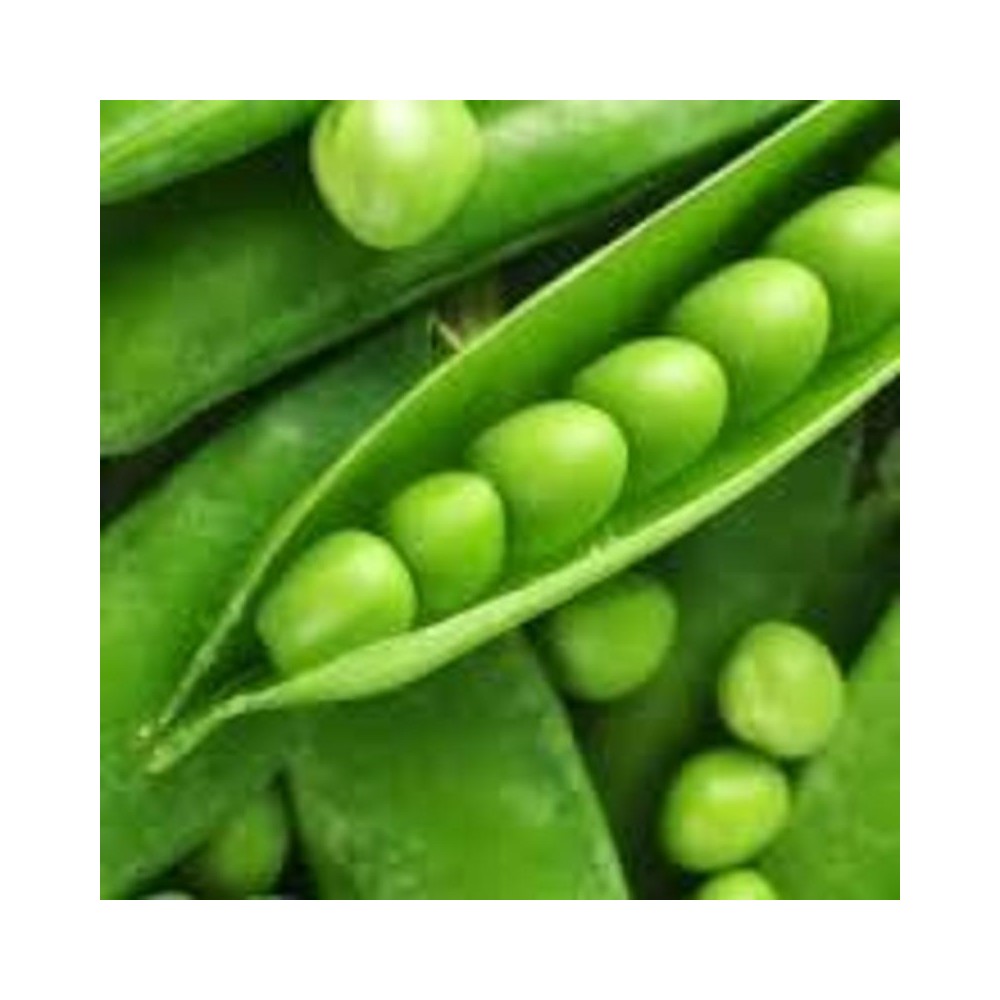



Peas are a cool-season crop, now coming in three separate varieties to suit your garden and cooking needs. They are: Pisum savitum, which includes both garden peas (sweet pea, inedible pod) and snow peas (edible flat pod with small peas inside) and Pisum macrocarpon, snap peas (edible pod with full-size peas). They are easy to grow, but with a very limited growing season. Furthermore, they do not stay fresh long after harvest, so enjoy them while you can!

Security policy visit http://nurserynature.com/content/10-security-policy

Shipping & Delivery Policy visit http://nurserynature.com/content/1-delivery

Cancellation & Refund Policy visit http://nurserynature.com/content/6-aeu-legal-revocation-terms
Peas are a cool-season crop, now coming in three separate varieties to suit your garden and cooking needs. They are: Pisum savitum, which includes both garden peas (sweet pea, inedible pod) and snow peas (edible flat pod with small peas inside) and Pisum macrocarpon, snap peas (edible pod with full-size peas). They are easy to grow, but with a very limited growing season. Furthermore, they do not stay fresh long after harvest, so enjoy them while you can!
Peas Planting & care
· To get the best head start, turn over your pea planting beds in the fall, add manure to the soil, and mulch well.
· As with other legumes, pea roots will fix nitrogen in the soil, making it available for other plants.
· Peas will appreciate a good sprinkling of wood ashes to the soil before planting.
· Sow seeds outdoors 4 to 6 weeks before last spring frost, when soil temperatures reach 45 degrees F. See this blog for tips on when to start planting peas.
· Plant 1 inch deep (deeper if soil is dry) and 2 inches apart.
· Get them in the ground while the soil is still cool but do not have them sit too long in wet soil. It’s a delicate balance of proper timing and weather conditions. For soil that stays wet longer, invest in raised beds.
· A blanket of snow won’t hurt emerging pea plants, but several days with temperatures in the teens could. Be prepared to plant again.
· Peas are best grown in temperatures below 70 degrees F.
· Check out this video to learn how to plant peas early while soil is cold.
· Make sure that you have well-drained, humus-rich soil.
· Poke in any seeds that wash out. (A chopstick is an ideal tool for this.)
· Be sure, too, that you don’t fertilize the soil too much. Peas are especially sensitive to too much nitrogen, but they may like a little bonemeal, for the phosphorus content.
· Though adding compost or manure to the soil won’t hurt, peas don’t need heavy doses of fertilizer. They like phosphorus and potassium.
· Water sparsely unless the plants are wilting. Do not let plants dry out, or no pods will be produced.
· For tall and vine varieties, establish poles or a trellis at time of planting. Look at this video to find out how!
· Do not hoe around plants to avoid disturbing fragile roots.
· It’s best to rotate pea crops every year or two to avoid a buildup of soil-borne diseases.
· Aphids
· Fusarium Wilt
· Keep your peas well picked to encourage more pods to develop.
· Pick peas in the morning after the dew has dried. They are crispiest then.
· Always use two hands when you pick peas. Secure the vine with one hand and pull the peas off with your other hand.
· Peas can be frozen or kept in the refrigerator for about 5 days. Place in paper bags, then wrap in plastic.
· If you missed your peas’ peak period, you can still pick, dry, and shell them for use in winter soups.